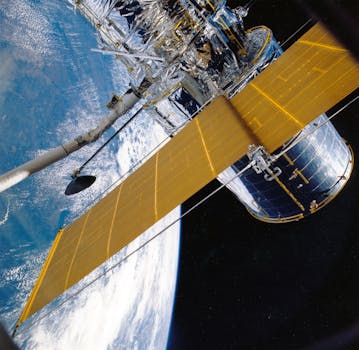GEO Satellites: Understanding the Technology and Applications of Geostationary Orbit Satellites

GEO Satellites: Introduction to Geostationary Orbit Satellites
GEO Satellites, or Geostationary Orbit Satellites, are a type of satellite that orbits the Earth at an altitude of approximately 36,000 kilometers above the equator. At this altitude, the satellite’s orbital period matches the Earth’s rotational period, allowing it to remain stationary in the sky relative to a fixed point on the Earth’s surface. This unique characteristic makes GEO satellites ideal for a variety of applications, including telecommunications, earth observation, and weather forecasting.
How GEO Satellites Work
GEO satellites are launched into space using a rocket and then placed into a geostationary orbit using a combination of propulsion systems and gravitational forces. Once in orbit, the satellite uses its onboard propulsion system to maintain its position and altitude. The satellite’s payload, which can include transponders, antennas, and sensors, is used to provide the desired services and applications. For example, telecommunications satellites use transponders to amplify and re-transmit signals, while earth observation satellites use sensors to collect data and images of the Earth’s surface.
Applications of GEO Satellites
GEO satellites have a wide range of applications, including telecommunications, earth observation, and weather forecasting. Telecommunications satellites provide services such as television broadcasting, internet connectivity, and mobile phone networks. Earth observation satellites are used to monitor the Earth’s surface and atmosphere, providing data and images for applications such as meteorology, agriculture, and disaster response. Weather forecasting satellites are used to monitor the Earth’s atmosphere and provide forecasts and warnings for severe weather events.
Benefits and Challenges of GEO Satellites
GEO satellites offer several benefits, including global coverage, high-bandwidth capacity, and long-term reliability. However, they also pose several challenges, including high launch costs, limited orbital slots, and the risk of satellite collisions and debris. Additionally, GEO satellites are vulnerable to interference and jamming, which can disrupt their services and applications.
Future of GEO Satellites
The future of GEO satellites is expected to be shaped by advances in technology and changes in market demand. Next-generation satellites are being developed with advanced payloads and propulsion systems, which will provide higher-bandwidth capacity and longer lifetimes. Additionally, the use of smaller satellites and constellations is becoming increasingly popular, offering lower costs and greater flexibility. As the demand for satellite services continues to grow, GEO satellites will play an increasingly important role in providing global coverage and connectivity.
